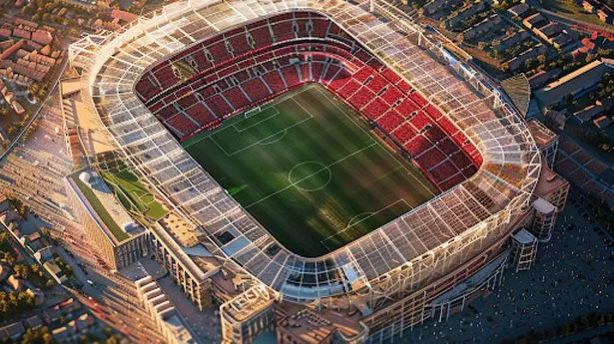Manchester United’s owners hope to make a final decision on whether to spend more than £2bn on a new 100,000-seat stadium by the end of 2024.
United co-owner Sir Jim Ratcliffe wants to build a ‘Wembley of the north’ for the side and, together with Trafford Council, has put together a taskforce to assess the feasibility of a new stadium and redevelopment of Old Trafford.
The taskforce is chaired by Lord Sebastian Coe and includes Greater Manchester Mayor Andy Burnham and former Red Devils skipper Gary Neville.
Club sources confirmed the group has already met four times, with discussion largely centred around a new-build rather than renovating the existing stadium, which would cost around £1.2bn and take longer to complete.
It has been stressed no decision has been taken.
Ratcliffe’s £1.25bn deal for his 27.7% stake in the club included £237m for future investment in the club’s stadium. His Ineos Group have taken over football operations from majority owners the Glazer family.
Complications in renovating the 74,310-capacity Old Trafford, which has been Manchester United’s home since 1910, include a railway line at the back of the Sir Bobby Charlton Stand and having to significantly reduce capacity during building works, causing inconvenience to fans and a major loss of revenue.
Unlike Tottenham, who played at Wembley while their £1.2bn stadium was being completed, United have no obvious alternative ground to use.
The club want something in keeping with their roots in an industrial city and it is anticipated the statues around the current stadium would be relocated to any new ground.
Ratcliffe wants local and national government to play some part in funding the overall project although, realistically, that is likely to involve transport links.
Exactly how the stadium would be financed is one of the subjects still under discussion.
At current exchange rates, United’s present debt is £647.5m, excluding outstanding transfer fee payments, made up of $650m (£504.5m) historic debt as a legacy of the Glazer family takeover in 2005 and £143m from a rolling credit facility.


Comments are closed.